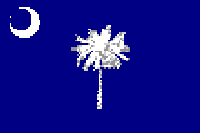
Name: John Malcolm Bischoff
Rank/Branch: E7/US Army Special Forces
Unit: Advisor, B Company, FFT-59, 7th Special Forces Group
Date of Birth: 18 July 1929 (Greenville SC)
Home City of Record: Mountain Rest SC
Date of Loss: 22 April 1961
Country of Loss: Laos
Loss Coordinates: 185521N 1022827E (TG240150)
Status (in 1973): Killed/Body Not Recovered
Category: 1
Aircraft/Vehicle/Ground: Ground
Other Personnel In Incident:
Orville Ballenger (released 1962); Gerald Biber;
Walter H. Moon (all missing)
REMARKS:
PROB KIA N AMBUSH AFT OVRUN
SYNOPSIS:
The early 1960's marked a period of civil war and military coups in
the country of Laos which resulted in major objectives being taken by Kong
Le-Pathet Lao communist forces. Kong Le had himself been a graduate of the
CIA-sponsored Philippine scout and ranger school and had announced that he was
fighting the corrupt royal government headed by Prince Souvanna Phouma. Kong Le
found support from the Soviets, who assisted him in defeating Gen. Phoumi
Nosavan's countercoup forces at the capitol city of Vientiane in December 1960.
Pathet Lao troops were airlifted by the Soviets to take the Plaine des Jarres
region in March 1961.
Although Gen. Nosavan and Groupement 12 of the new Forces Armees de Laos continued to give chase to Kong Le and his troops, they were not successful in regaining the Plain of Jars. In early March two Pathet Lao battalions drove Groupement 12 back toward Vang Vieng. Capt. Walter Moon's four-man Field Training Team FTT-59, MAAG, of the 7th Special Forces Group was attached to the 6th Bataillon d'infanterie (Lao) at Ban Pha Home, about thirty miles north of Vang Vieng. On April 22, 1961, the battalion was subjected to a heavy and accurate artillery barrage and was rapidly flanked at Phou Tesao.
Shortly after the battalion commander announced that they were cut off, the perimeter collapsed and the Pathet Lao quickly overran the battalion positions. The team's commander, Capt. Walter Moon, was captured in the initial attack.
SFC John M. Bischoff (the medic), Sgt. Gerald M. Biber (the radio operator), and some Laotian soldiers jumped aboard an armored car, heading south on Route 13, in a breakout effort. According to Lao survivors, they crouched behind the turret, but the car came under heavy grenade attack. Sgt. Bischoff fired a machine gun from the vehicle until he was shot through the neck and killed. Sgt. Biber had already been wounded and was apparently killed by stick grenades thrown against the armored car. The vehicle was halted and its crew captured.
Sgt. Orville R. Ballinger, demolitions sergeant, escaped through the jungle and linked up with some Lao soldiers. They found a boat and were going downriver when they were surprised and captured by the Pathet Lao seven days later. Sgt. Ballenger were eventually released in August 1962.
Capt. Moon tried to escape twice during his confinement, and on the last attempt was wounded in the chest and head. According to Ballinger, Moon's head injury caused him to be come mentally unbalanced, and after several months of persecution, he was executed in his prison quarters at Lat Theoung by a Meo guard and a Pathet Lao officer on July 22, 1961. The Pathet Lao have consistently denied knowledge of Moon, Biber or Bischoff.
In 1984, James "Bo" Gritz, a highly decorated former Special Forces colonel, brought documents and a photograph pertaining to Moon from Laos and gave them to the U.S. Government. Moon's wife positively identified the photograph and Moon's signature. The Government stated that the photograph was made May 6, 1961, two weeks after Moon's capture. (Moon was normally clean-shaven but had, according to USG, grown a full beard in 2 weeks!)
Though the documents were taken from a large collection of 250-300 similar documents held by the Lao People's Army in Laos, the U.S. refused to demand the information from the Lao. The Defense Intelligence Agency, according to Congressman Stephen Solarz, has full knowledge of this collection.
Whether Biber and Bischoff survived the ambush on April 22, 1961 is unknown. They and Moon are among nearly 600 Americans who disappeared in Laos and did not return. The treaty which ended American involvement in the war in Southeast Asia did not pertain to the prisoners held by the Lao, and not a single prisoner was released from Laos in 1973. The Lao publicly stated they held prisoners, but the U.S. has never negotiated for their release.
Were it not for thousands of reports relating to Americans still held captive in Southeast Asia, we could simply close the door on men like Biber, Bischoff and Moon. But as long as there is even one man alive, the nation he went to serve must do all it can to bring him home.